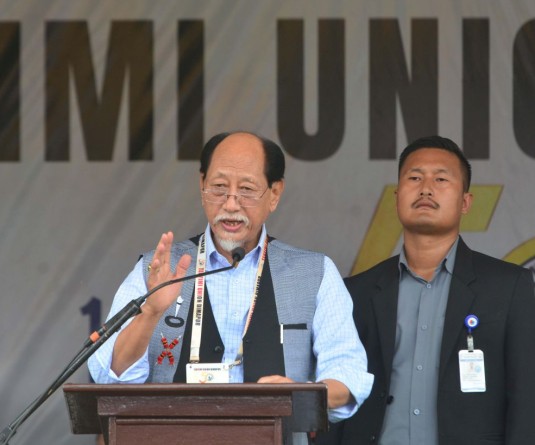
DIMAPUR, DECEMBER 30 (MExN): A recent study conducted by the Nagaland Pollution Control Board (NPCB) observed that the growing population and an increase in the number of shops using plastic are the main reasons for the wide usage of plastic materials.
In a publication from the NPCB, it cited the report as having found that Kohima contains a considerably large amount of plastic bags in every nook and corner of any street, public places and most notably markets.
The survey targeted manufacturing/recycling units, scrap dealers and households. The report stated that there are 6 plastic manufacturing units, out of which four use virgin plastic materials and the other two use mixture of both virgin as well as waste plastic, i.e. mixed plastics to manufacture water storage tanks and plastic ropes.
In a survey of 17 scrap dealers, it was found that scrap dealers buy the plastic scraps from local rag pickers and other waste by door to door collection.
Meanwhile, from the survey of 133 households, the report found that 100 used plastic bags excessively. It also found that plastic bag usage is high among Dimapur residents. Some of the reasons attributed to the widespread use were easy availability, lack of alternative materials and light weight.
The survey also found that 80% disposed their plastic waste in open dumping, 30% in community bins, and only 3% responded that they bury their plastic. Meanwhile 90% of the respondents segregate their waste at home. 53% also responded that newspapers were effective in creating awareness about plastic waste management while 30% said that social media was effective.
The report called for more efforts to mobilise residents to take action against post use disposal and utilisation of plastic bags.
It was also found that majority of the plastic waste collected by scrap dealers were PET bottles, buckets, containers, shampoo bottles, cosmetic tubes, toys, chairs, jugs, grocery containers, cds and jerry cans.
The NPCB publication meanwhile also highlighted some success stories on plastic waste management in Nagaland. It cited the use of plastic bitumen road as an innovation; plastic waste management at Sechu Zubza; and awareness drives carried out by educational institutions and other nongovernmental organisations.
The NPCB informed that plastic bitumen road technique was first experimented by the board in 2009 at its office premises. The technology was replicated by an NGO, LiFE in partnership with the Dimapur Municipal Council in 2017.
Another success story, according to the NPCB was the waste management, especially of plastic waste in Sechu Zubza comprising of 3425 households. A women’s self help group here understanding the importance of waste management made cleaning up their job and also as a beneficial activity.
The women, who are farmer, housewives and small business owners collected waste along the national highway twice or thrice a week. They segregated the waste and sent it to Dimapur to be sold to scrap dealers.
In addition, all churches here adhered to a common no disposal plastic and paper plates policy. The Sechu Zubza youth organisation also ordered that only 40 micron+ plastic should be used and prohibited the use of plastic and paper plates during any occasion.





